
Problems and Solutions
Unit
Overview
In previous units, you have studied Earth and Space Sciences.
Turning now to Science and Technology, you will
explore various problems on Earth and see the role that technology plays in
their solutions. You may conclude that human activity and technology are a
“mixed blessing” to the Earth. Sometimes our activities are harmful to delicate
ecosystems, but sometimes they can actually be helpful to the environment.
Solutions to problems are seldom simple and may cause unforeseen difficulties
for our natural world. In this unit we will look at examples of how technology
and human activity can have positive and negative impacts upon the environment
and how the solution to one problem may create other problems.
Unit Directions
Read the following and study the
suggested websites, then answer the questions. Important vocabulary terms and
concepts will be in bold type.
Introduction
As a citizen of Earth, you have an important obligation to
preserve our clean air, pure water and our natural environment, not only for
yourself, but also for generations of Earth’s citizens that are yet to be born.
Indeed, we have a right to these things. But, as always, when we have rights,
we have obligations.
The conveniences of our present life have made our lives many
times easier than the lives of our ancestors. Modern inventions such as the
telephone, the automobile, the computer, and even indoor plumbing have greatly
improved the quality of our lives. Medicines and up to date understanding of
sanitation have improved our health and increased our life spans.
The
Problem with Cars
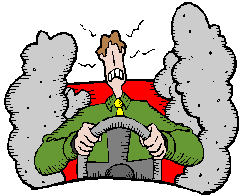


But for all of these modern conveniences, there has been a
price that has often been paid for by the earth
itself. For example, automotive technology has been a good thing for many
people. Transportation from one place to another is much easier than it was a
century ago. The desire to own and drive a car is linked to pleasure,
convenience and freedom. Automobiles solve many transportation problems
for those who drive them. But think about the “cost” of automobiles to our
earth.

Driving a car is the most polluting thing that an ordinary
citizen does. Tons and tons of pollutants
are released into the air in our large cities every day. A pollutant is something that pollutes,
especially a waste material that contaminates air, soil, or water. The main
source of these pollutants is the cars and trucks that give them off. An
internal combustion engine such as a car or truck uses fuel by mixing it with
air and then burning it. When this happens, some exhaust gases are left over.
They go out the tailpipe and into the air. Some of the exhaust gases given off by road traffic include
black smoke, carbon monoxide, lead, hydrocarbons, nitrogen oxide and sulfur
oxide. These chemicals combine to produce adverse effects on the health of both
car owners and innocent bystanders. Smog
is what happens when exhaust gases mix with sunlight or fog. The more
people drive, the more smog is released. Smog makes people sick, increases
problems in lungs and may be one cause of asthma in children.
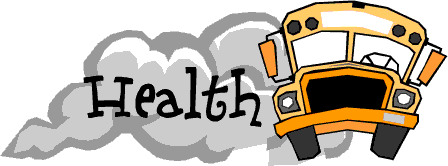
To learn more about smog, read the information taken from the
following web site: https://www.nationalgeographic.org/encyclopedia/smog/
What
You Need to Know About Ozone and Your Health
Smog -- Who Does It Hurt?
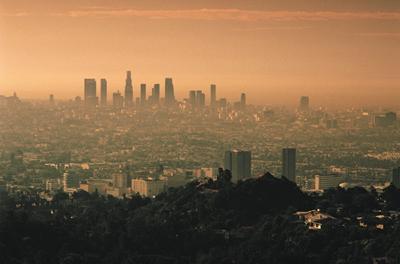
On a hot, smoggy summer day,
have you ever wondered: Is the air safe to breathe? Should I be concerned about
going outside?
In fact, breathing smoggy air can be hazardous because smog
contains ozone, a pollutant that can harm our health when there are elevated
levels in the air we breathe. Read more about ozone.
What
is Ozone?
Ozone is an odorless, colorless gas composed of three atoms
of oxygen that is found in smog. Ozone occurs both in the Earth's upper
atmosphere and at ground level. Ozone can be good or bad, depending on where it
is found:
Good
Ozone. Ozone occurs
naturally in the Earth's upper atmosphere-10 to 30 miles above the Earth's
surface-where it forms a protective layer that shields us from the sun's
harmful ultraviolet rays. This "good" ozone is gradually being
destroyed by manmade chemicals. An area where ozone has been most significantly
depleted-for example, over the North or South Pole-is sometimes called a
"hole in the ozone."
Bad Ozone. In the Earth's lower atmosphere, near ground level, ozone is
formed when pollutants emitted by cars, power plants, industrial boilers,
refineries, chemical plants, and other sources react chemically in the presence
of sunlight.

Children and adults of all ages
who are active outdoors are at risk from ozone exposure.
Should
I Be Concerned About Exposure to Ground-Level Ozone?
That depends on who you are and how much ozone is in the air.
Most people only have to worry about ozone exposure when ground-level
concentrations reach high levels. In many
In many areas of the country, measurements of ozone
concentrations are converted into color contours of the AQI categories (green,
yellow, orange, red, and purple, shown above) and displayed on a map (see
example below) to show ozone levels in the local area. The map is updated
throughout the day and shows how ozone builds during hot summer days. In some
areas, ozone maps are used to show a forecast of ozone levels for the next day.
Once you understand the color scheme, you can use the maps to quickly determine
whether ozone concentrations are reaching unhealthy levels in your area. Ozone
maps appear on some televised weather broadcasts and are also available from
EPA's web site at https://www.epa.gov/ and/or PDF.
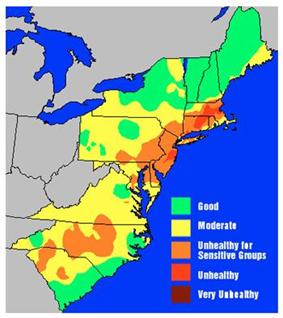
This map shows ozone levels in the eastern
The web site information clearly showed that smog causes many
problems. You might, then, wonder if the internal combustion engines in today’s
cars cause so many problems, why someone doesn’t invent something better. Well,
the answer is, they have. But the new technology has its own problems. For
example, a solar car seems like a good idea. Solar engines get their power from
the sun. Solar power is free,
unlimited and has zero emissions. An emission is something discharged into
the air, especially by an internal combustion engine (gasoline powered car or
truck). Here’s the drawback – The sun isn’t always shining and we can’t control
the weather. Additionally, solar cells are inefficient.
Scientists and engineers are working to develop hydrogen fuel
cell cars. These cars combine hydrogen and oxygen from the air to produce an
electrical current that powers a motor. However, production of the hydrogen
fuel releases chlorine (a pollutant)
as a by-product. Other methods of mass production release carbon dioxide. This
type of car is very expensive and precious metals are needed for the engine.
Other solutions to this problem including cars that run by
compressed air, compressed natural gas, propane, alcohol or electricity, create
further problems, each in their own way.
More
Problems
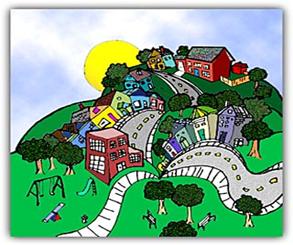
The pollutants released by cars and trucks are not the only
problems created by our modern technology. Technology
is the practical application of science to everyday problems. Sometime the
technology itself may cause more problems. For example, household items that
you or your parents use every day can cause problems for the environment. Go to
the following website and explore problems created by common household
products; https://www.epa.gov/pesticides. Learn the definitions of pesticide
and toxic substance.
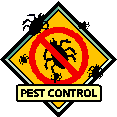 Pesticides
Pesticides
No one is happy when insects or other pests invade his or her
home. So what should we do? Are pesticides and poisons the answer? What are the
consequences of pesticide use? As you discovered when exploring the “Home Tour”
website, pesticides poison the household pests, but they might also poison us!
Some insects are good for the environment (beneficial).
Pesticides kill beneficial insects as well as those that cause damage to plants
or spread disease (or sting us). So what is wrong with using non-poisonous
methods for getting rid of pests in our homes? Using non-poisonous methods such
as traps and “natural” baits are generally much easier on the environment. They
seem to be a solution to the problem. But, remember, when a problem is solved,
other problems seem to arise. Natural methods of pest control DO work, but they
work much more slowly than do pesticides that kill insects with “one shot”, and
of course, non poisonous methods kill beneficial insects, also. This is seen by
some people as a disadvantage to these methods, even though it is kinder
alternative for our natural world.
Conclusion
Our technology
brings us safe living conditions, comfort, convenience and efficiency, but each
new development brings its own set of problems and solutions. However, it is
important to think about not only the solution to the problem, but the possible
consequences of the solution. Every day, scientists and engineers work to make
our lives better through technology. We all must be aware of the fact that the
solution to one problem may cause other problems and consider our actions
carefully.